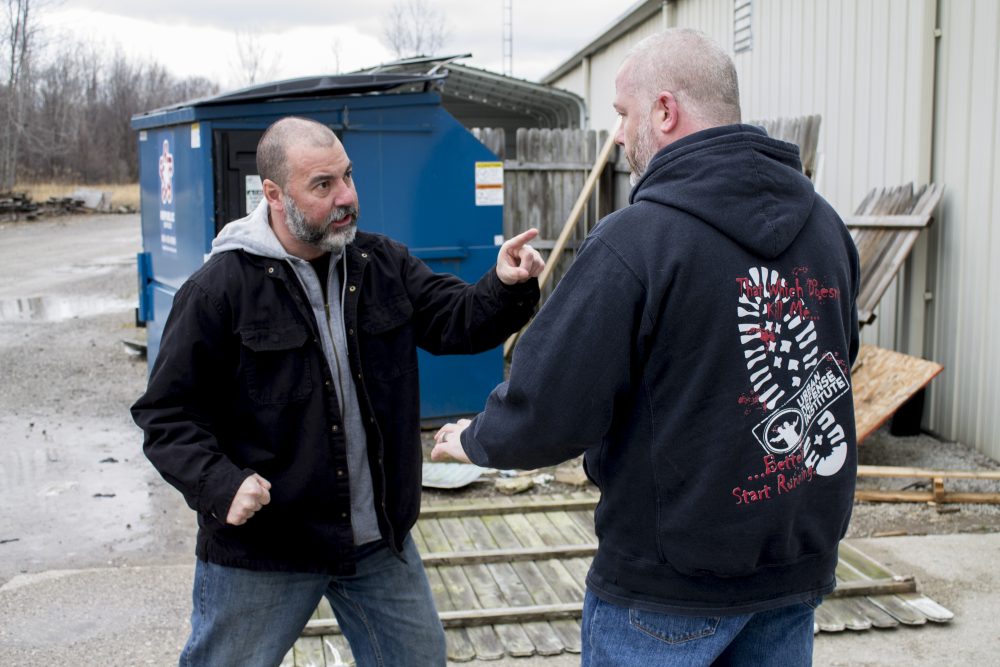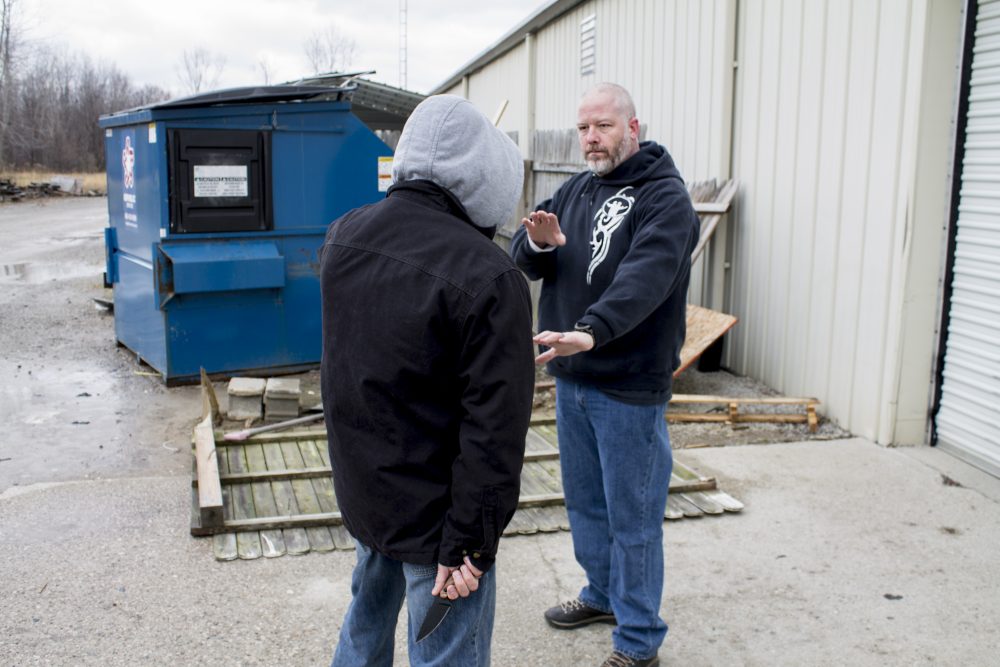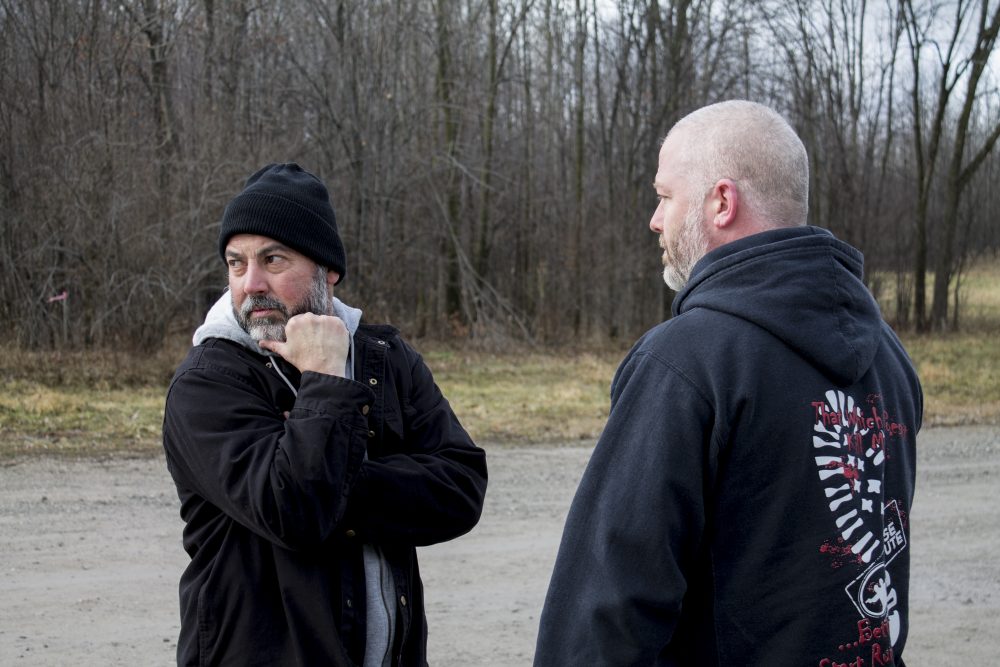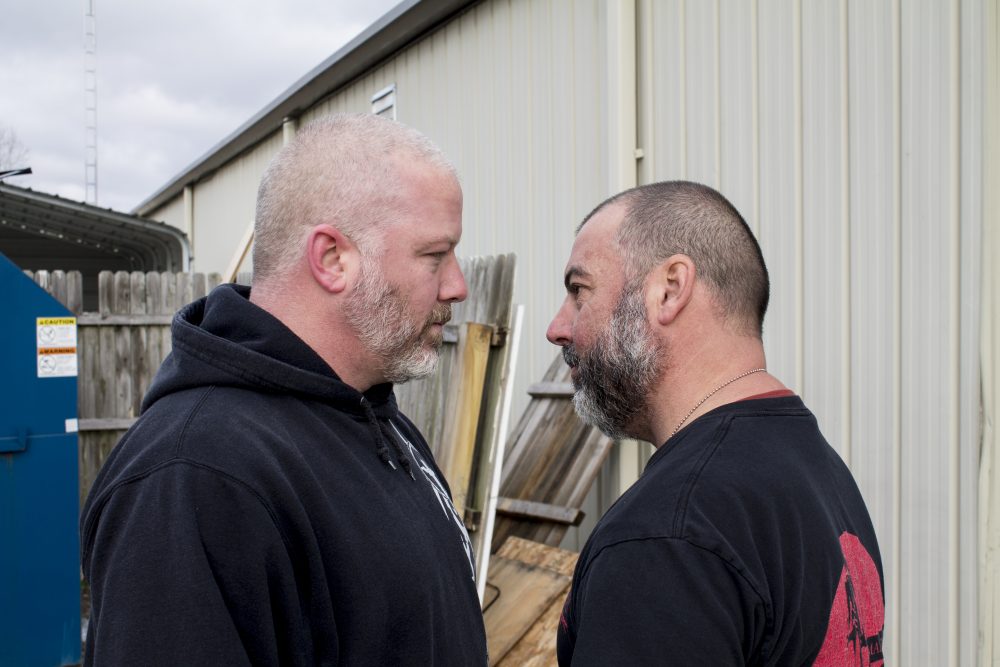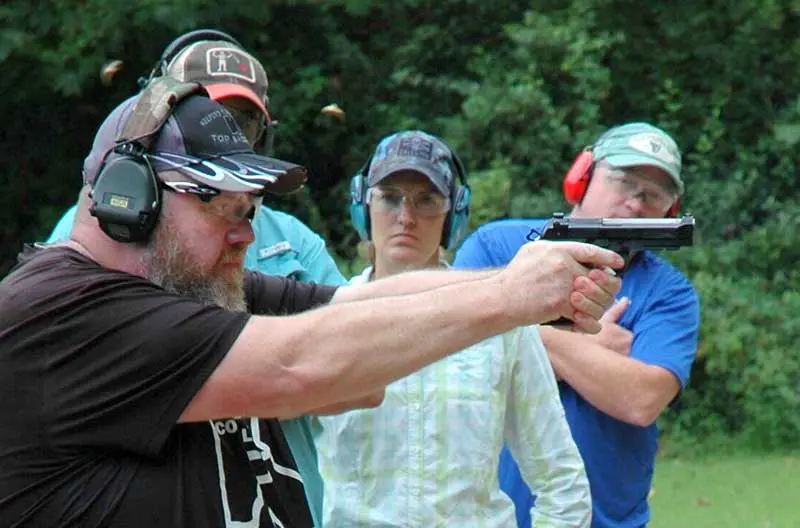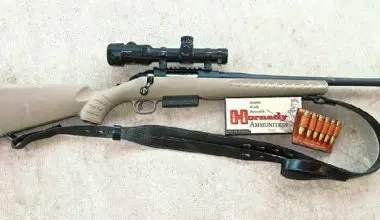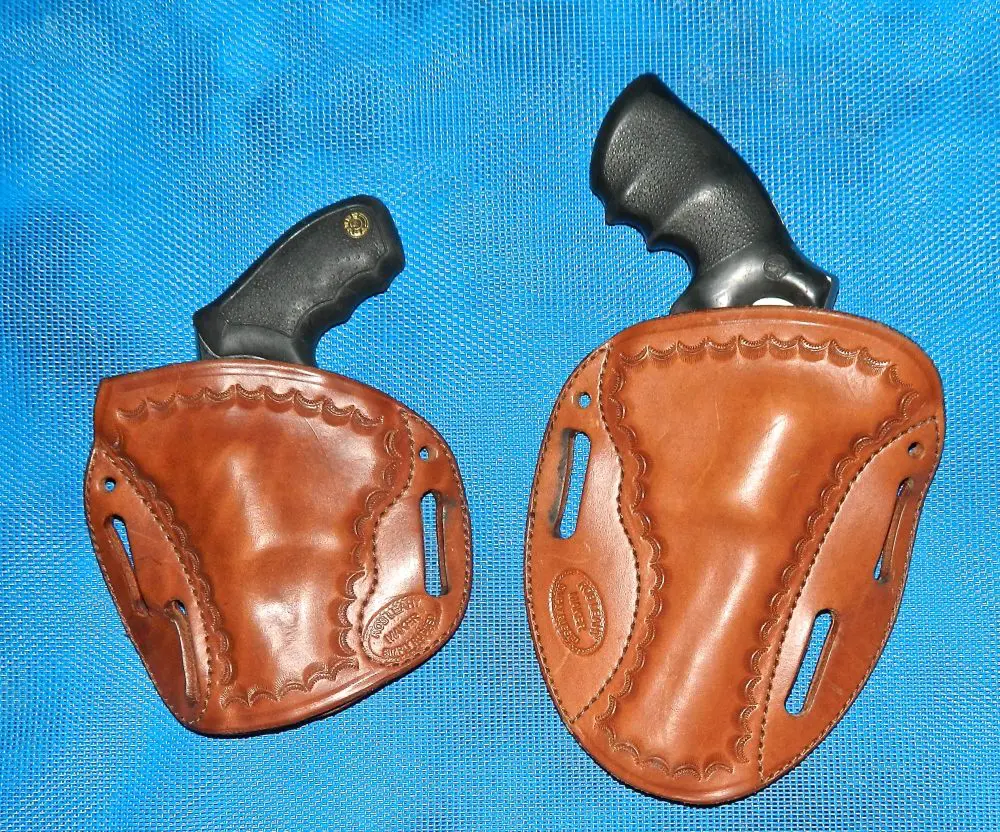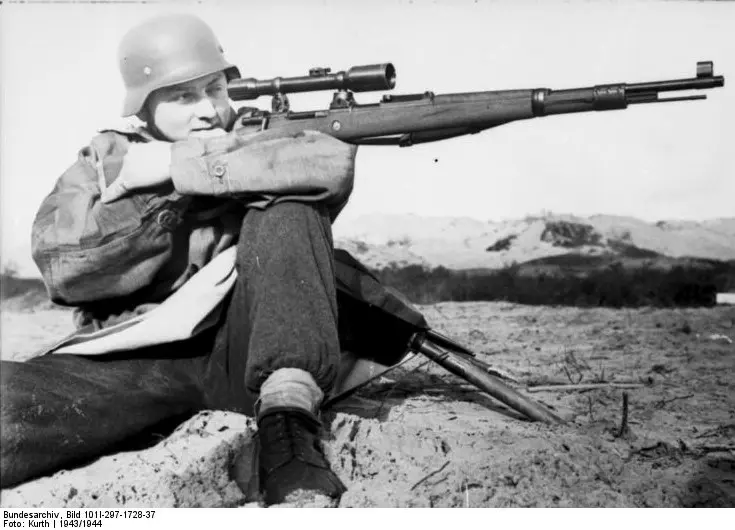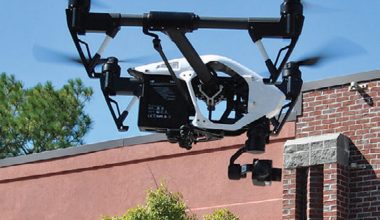Can you tell what an opponent may do before it comes to this?
Everybody has some form of “tell” when they have something up their sleeve. Being able to read their tell during an aggressive encounter could be vital to successful defensive measures.
Whether you are a firearms professional or just want to protect your family, always be aware and alert to what the aggressor is telling you, even when he isn’t aware that he is. You may see or experience many of the cues (discussed below) simultaneously. There is no set structure to how the aggressor will behave, so be aware of all given cues. While some of this may seem elementary, constant study makes for increased and rapid utility.
Table of Contents
AUDITORY CUES
Some auditory cues may be a little harder to key in on than others, while some may be misleading. But it is still important to listen for them and understand them, because with some aggressors they may be the only cues you get.
Rapid Breathing
Due to the effects of an adrenaline dump, the heart rate quickens, requiring more oxygen. At this time, the person begins to breathe more rapidly to compensate. Although a little more difficult to spot, if the aggressor is breathing rapidly, it is possible he is experiencing a surge of adrenaline in preparation for attack.
Shaky Vocal Patterns During Speech
During an adrenaline dump, the body experiences a rush brought on by the surge of glucose into the bloodstream, which can cause uncontrollable shaking and affect the vocal and speech patterns. If an aggressor is speaking in a shaky voice, it may not be an indication of fear, but a sign that his body is preparing for an impending attack.
Aggressor tries to intimidate by clenching his fists and yelling.
Deepened or Louder Speech
Used as an attempt to intimidate his victim, an aggressor often deepens his voice to sound more ominous or authoritative. The aggressor may also yell to place the victim in a passive state or trigger a fear response.
Threatening Speech
Along with the deepened or louder speech, the aggressor may often use threatening speech to try to intimidate you. Often the more outrageous the statement, the more nervous he is, causing him to overcompensate and build himself up more. He may say things like, “I’m going to rip your head off and shove it up your ass!”
Self-Approving Speech
An aggressor often uses dialogue that distances him from guilt as a way of disassociating himself from blame and placing it on the victim, such as, “What’s your problem?! What are you looking at?! Don’t make me kick your ass.”
If someone is holding his hand to his side and slightly behind his thigh, assume he has a weapon. Move outside his arc of deployment and maintain a strict reactionary gap.
FACIAL CUES
Not everybody is adept at reading another person’s face for emotional cues, but often an aggressor tells you volumes about his plans with a series of subtle facial cues.
Thousand-Yard Stare
During the thousand-yard stare, the blink rate slows to two to four blinks per minute, and the aggressor appears as though he is looking right through you. He may have a glazed or empty stare and his expression becomes flat and emotionless. He is removing all emotional and moral implications of the coming attack.
Target Acquisition
If their eyes are scanning your body while they speak to you, they may be attempting to acquire a target for maximum impact during their initial strike. Pay attention, as this will not only allow you to be aware of the imminent attack, but also alert you to where the first strike might occur.
Avoiding Eye Contact
This could mean a variety of things. One, he may be showing you he lacks respect for you. In some parts of the country and in some cultures, eye contact is a sign of respect. Two, it is possible he may be intimidated by you and is avoiding eye contact while he builds himself up for the attack. Three, he may want to avoid letting you see his plans by preventing you from looking into his eyes.
Intense or Focused Glare or Attention
The opposite of avoiding eye contact: if he is staring directly into your eyes with an intense or focused glare, he is trying to get into your head and psych you out while psyching himself up.
Circling to look for a weak spot or in an attempt to flank is often accompanied by adopting an aggressive stance.
Rapid Blinking
The typical blink rate in most individuals is roughly 20 blinks per minute. But stress often causes rapid blinking, which indicates the aggressor may be lying about his intentions or working up to an event.
Jaws Clench and Unclench
This is a sign of pent-up energy, usually resulting from an adrenaline dump. The act of clenching the jaws is also used by fighters to decrease the likelihood of being knocked out, losing teeth or biting their tongue in the event of physical contact.
Flared Nostrils
Due to the need for more oxygen during an adrenaline dump, the aggressor’s nostrils may flare to allow for deeper breaths through the nose. This is especially true when he is clenching his jaws.
Lowered Eyebrows
Lowering the eyebrows indicates aggression and ferocity. When an aggressor does this, he is either attempting to intimidate you or psych himself up.
Red Face
During an adrenaline dump, your body’s vascular system expands (vasodilation) to deliver epinephrine to all parts of the body. During this time, some people experience a reddening of the face.
Bad guy holds his hands high in preparation to strike and scans the area for witnesses or backup.
PHYSICAL CUES
Although an aggressor can suddenly strike without showing any physical cues, if he is exhibiting physical cues, he is most likely preparing to attack in short order. With some of these cues, he is also testing you to check your awareness and your ability or willingness to respond.
Fidgeting
Fidgeting is often a sign of stress, which may be a result of his intentions. Watch for fidgety hands, such as putting them in and out of his pockets. Also watch for his feet being fidgety, such as kicking small rocks or trash on the ground. He may even be trembling slightly due to the increased adrenaline in his system.
Fists Clench and Unclench
This is also a sign of high energy and can be intended to intimidate you. He may also be testing your awareness and trying to desensitize you to his fists clenching, so you won’t realize it when they finally clench for business.
Jumpy or Bobbing
Acting jumpy or bobbing around is a sign of high energy, most likely caused by an adrenaline rush. It can also be a way to loosen himself up or desensitize you to exaggerated movement, making you unprepared for the actual attack.
Adopting a focused and intense glare is often employed to psych out the victim.
Adopting an Aggressive Stance
If he adopts an aggressive or fighting stance, this is a sure sign he is getting ready to launch an offensive. Be ready.
Circling
If he is circling you, he is looking for a weak opening to attack or attempting to flank you. This will often be in conjunction with adopting an aggressive stance or jumping/bobbing around.
Feigning Punches or Kicks
When an aggressor feigns punches or kicks, he is often testing your awareness of the situation and your reaction and response to aggressive behavior.
Scanning
Before an attack, many aggressors start looking around (scanning the area) to see if there are any witnesses or if either of you have backup close at hand.
Holding a Hand Behind His Back
If he is holding a hand behind his back or straight down his side with his hand hidden behind his leg, this is a sign he may have a weapon. Keep a careful eye on that hand and stay clear, outside his arc of deployment.
Removing Articles of Clothing
When preparing for an aggressive conflict, guys may take off articles of clothing, such as jackets, hats, glasses, and shirts. I have even seen guys take off their shoes. There are varying reasons for this behavior. It could be to free up their movement, or possibly more posturing, and in some cases it is to prevent that article of clothing from being used to grab or tie him up.
Maintaining Raised Hands
If he is talking with his hands a lot or holding them in a higher posture, possibly even touching his face or hair, he may be getting ready to strike. This is a way to keep the hands at optimal striking level without projecting.
CONCLUSION
Whether you are military, law enforcement, security or private citizen, when you see any of these cues, make sure to maintain a strict reactionary gap. Pre-assault cues often happen on a subconscious level and give indications of a person’s intent toward violent action.
Maintaining a heightened level of awareness of not only your surroundings but also the aggressor’s actions and conscious and unconscious cues will give you an edge in the possible impending confrontation.
Your awareness may put him off guard or back him down completely. Assailants prefer easy victims. Keep it real and stay safe.
Joshua Swanagon has studied survival in both urban and wilderness environments in Colorado and Michigan for most of his life, while also adding experience in harsher terrains abroad. He utilizes his experience and years of diverse martial arts and combatives training and real world application in the fields of knives, survival, self-defense and tactical subject matters.


